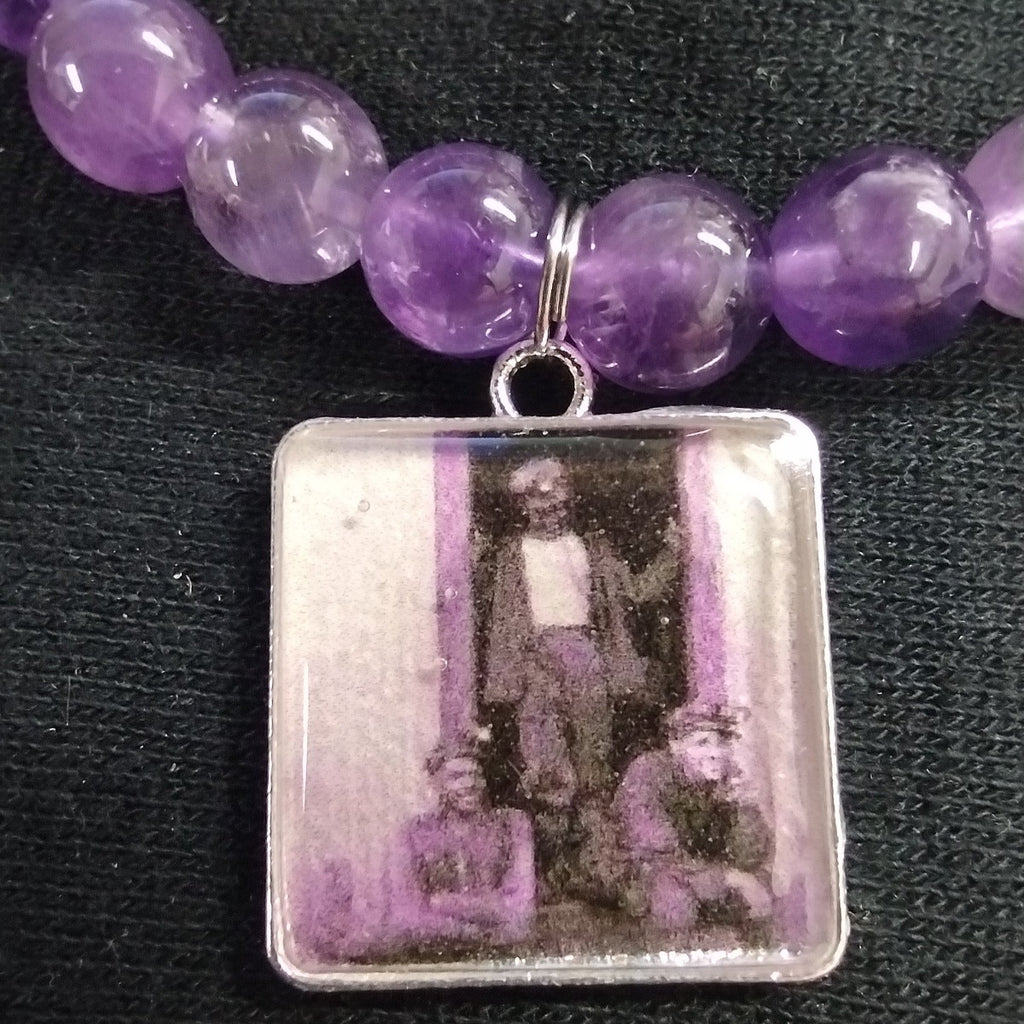
Miners at the Lamp House Bracelet
- National Archives Store Exclusive
- Made in Connecticut
- Stretch bracelet, amethyst beads
- Poly resin coated photo reproduction
-
The photograph in the charm on this stretch bracelet is from Gilliam Coal and Coke Company, Gilliam Mine, Gilliam, McDowell County, West Virginia and shows James Robert Howard who has received his safety lamp at the lamp house. Of the 232 employees at this mine, 60% are Negroes. The photo is colorized purple, the color of emancipation, and is set off by matching amethyst beads. We also offer a matching necklace.
-
The Power & Light exhibition features more than 200 of photographer Russell Leeʼs works about of coal miners and their families in their homes, mines, and communities. Visitors will experience large-scale prints, projections, and digital interactives. Although Leeʼs earlier images of Depression-era Americans are well-known, his 1946 coal survey images have enjoyed little public exposure. The full series, which includes over 2,000 of Lee’s photographs, can only be found in the holdings of the National Archives. These images document inhumane living and working conditions, and they also depict the joy, strength, and resilience of the minersʼ families and communities
Russell Werner Lee (1903-1986) was born in Ottawa, Illinois. Originally trained as an engineer, he was methodical in his work, and approached his subjects with warmth and respect. The quiet Midwesterner put people at ease, enabling him to capture scenes of surprising intimacy. Many of his photographs reveal worlds through small details—keepsakes on the mantel, lined and calloused hands. What may be most distinctive about these images is their reflection of the photographerʼs respect for his subjects. Despite their plight, it is their strength, dignity, and humanity that strikes the viewer.
Although the coal survey photos represent some of Leeʼs finest work, his best-known photographs are from an earlier project. Lee was one of several photographers hired by the federal government in the 1930s to document the toll of the Great Depression and drought on rural Americans. While he worked alongside famous colleagues including Walker Evans and Dorothea Lange, Lee eschewed celebrity. He aimed to inspire social change, believing visual evidence of struggle and hardship could inspire reforms.